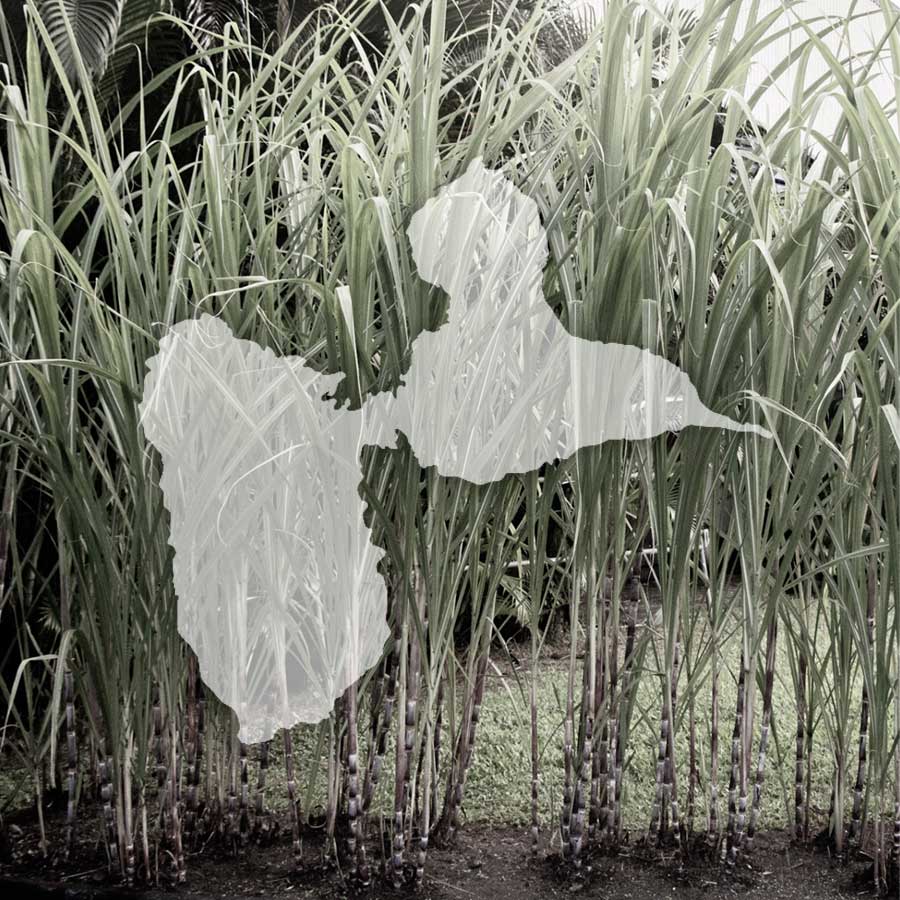Guadeloupe rum, get to the bottom of the bottle
Why does a Guadeloupe rum develop this aromatic profile? Let’s go from the bottle to the cane to find out.

Photo d’illustration © Anne Gisselbrecht
Beware, your visits to the nearest specialist wine shop are starting to become very frequent. But I agree with you, there’s so much to discover, you don’t want to waste any time.
But this time, you have an idea in mind. You’ve been wanting to know more about Guadeloupe’s rums for some time now. As a child, you discovered this beautiful island on a family trip, but you were far too young to be interested in the distilleries and their production. Now you want to make up for lost time.
It’s a good thing your cellarman is here, because it’s not always easy to find your way around Guadeloupe’s rums. Thanks to his skilfully distilled advice (a hackneyed pun if ever there was one), you understand the category a little better – or so you think – and you decide to get your hands on a white rum and an aged rum.
Yes, you’ll stop at nothing to better understand the world of rum.
Door closed behind you, shoes tossed into a corner, hands washed (yes, this is important), you take out two tasting glasses (you really must avoid tumblers, sometimes called whisky glasses, not to mention mustard glasses featuring characters from the latest Disney movie), into which you pour a few centilitres of your recent acquisitions.
You start to lean into the white and let the old wine breathe. Intense aromas of citrus, herbaceous cane and slightly shy flowers, that’s how it greets you.
You’ll immediately recognize the profile of pure cane juice rums. These are almost always mistakenly referred to as rhums agricoles – although in the case of the Guadeloupe rum you’re sniffing, it is indeed a rhum agricole.
The short legislative section that follows is not intended to send you into the arms of Morpheus, so concentrate a little.
Any rum made by fermenting freshly pressed cane juice is not rhum agricole, but all rhum agricole uses cane juice as its raw material.
This is the first condition for a rum to be able to indicate this on its label (in Europe), and the others are as follows:
- It must be produced in Martinique, Guadeloupe, Reunion, French Guiana or Madeira.
- It must not be distilled above 90% alcohol.
- It must have a volatile substance content of at least 225 grams per hectoliter of pure alcohol.
The first two dashes are fairly clear, the third a little less so. Volatile substances (sometimes referred to as congeners or non-alcoholic content/TNA) are the chemical elements that give rum its taste, and the more of them it contains, the more expressive it will be. These include esters. I’ll stop here and let you meditate on this, or take a nap.
This white rum from Guadeloupe is just right for you, and you’re already thinking about the ti-punches that will lower the level of your bottle.
You then turn to the other glass, which has been holding the old Guadeloupe rum for a few minutes. Nose to nose with an unfamiliar structure, you remain perplexed.
You detect aromas of baked caramel, spices, licorice, leather, orange zest and a hint of menthol. None of this rings a bell, and you’re genuinely surprised to find such a profile in an old agricole. And you should be! This Guadeloupe rum is a molasses rum, in other words, a sugar mill rum or industrial rum.
Your wine merchant has given you a surprise: while Guadeloupe’s agricultural rums are of course available in aged versions, he has directed you towards this one, which, right there in your glass, makes you hesitate.
Guadeloupe has a geographical indication (or GI). In order for a rum produced on the island to bear the label “Rhum de Guadeloupe”, certain production rules must be observed. These are fairly permissive, for example as regards the raw materials used, which can be cane juice or molasses.
In fact, you’ll need to look for additional information on the label: “agricultural” or “sugar mill” will tell you exactly that.
To complicate things a little (which are already not so simple), there’s also a Guadeloupean tradition of mixing molasses (the non-crystallizable residue of the sugar industry) and cane juice.
You tell yourself that at least, thanks to the glass in front of you, you have an idea of what Guadeloupe molasses rum can be like, and you’re not entirely wrong.
Now all you have to do is discover what LES rhums vieux de l’Île Papillon have to offer, but to do that, you’re going to have to taste a whole bunch of them. And the reason is simple: as the GI specifications are so broad, rum distilleries also have the choice of distillation method.
An iron still (of the Charentais type), a distillation column or even a hybrid still… anything is possible.
The result is rums with very different profiles, as can already be seen in the white rums.
Of course, the other elements that impact a spirit’s aromas must also be taken into account: duration of fermentation, alcoholic percentage at the alembic’s exit, time spent in cask and type of wood used for this cask, conduction of alcoholic reduction, and so on…
Of course, what might be interpreted as a barrier to understanding what “Guadeloupe rum” means, can also be seen as a formidable playground for producers, and a huge opportunity for you to explore. So, where two old rums from Martinique share many common traits, two old rums from Guadeloupe may be far apart.
It’s up to you to discover them!




